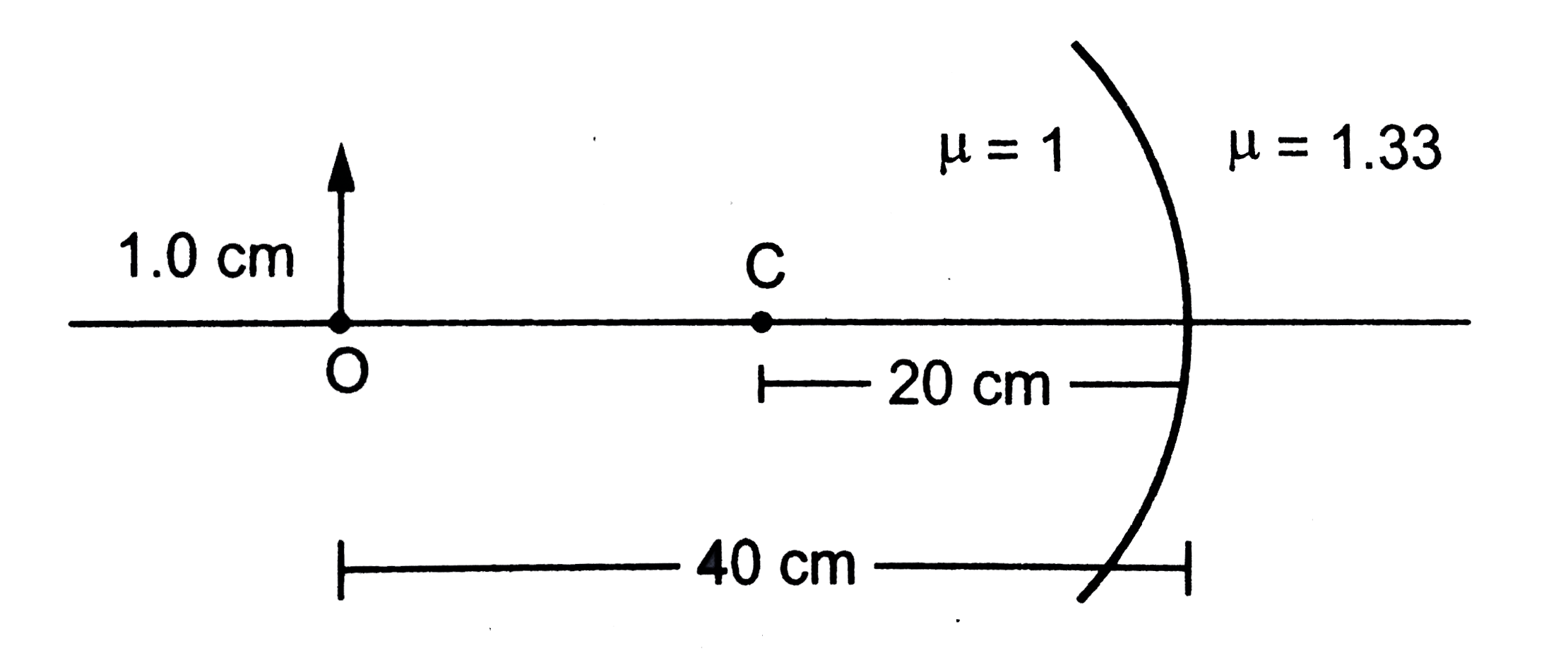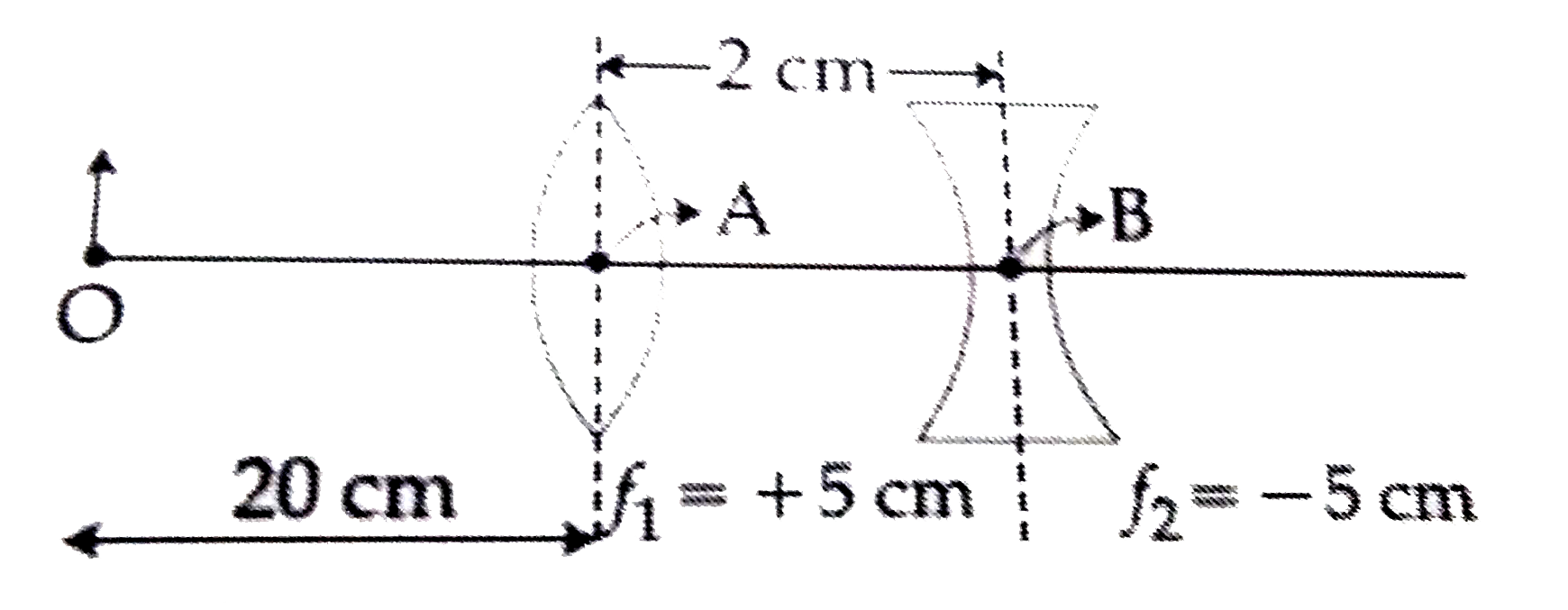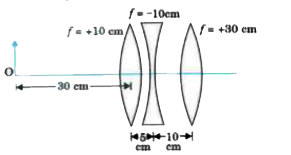Find the size of the image formed in the situation shown in figure.

−0.6cm
+0.6cm
+0.1cm
+1.2cm
The correct Answer is:B
Here u=-40cm, R=-20cm, μ1=1,μ2=1.33.Wehave
μ2v−μ1u=μ2−μ1R
or,1.33v−1−40cm=1.33−20cm
or, 1.33v=−140cm−0.3.20cm
orv=−32cm
The magnification is
m=h2h1=μ1vμ2u
orh21.0cm=−32cm1.33x(−40cm)
or h2=+0.6cm
The image is erect.
Topper's Solved these Questions
- GEOMETRICAL OPTICSBOOK - HC VERMACHAPTER - GEOMETRICAL OPTICSEXERCISE - Worked out Examples
28 Videos
- GEOMETRICAL OPTICSBOOK - HC VERMACHAPTER - GEOMETRICAL OPTICSEXERCISE - Short Answer
18 Videos
- GEOMETRICAL OPTICSBOOK - HC VERMACHAPTER - GEOMETRICAL OPTICSEXERCISE - Exercises
79 Videos
- GAUSS LAWBOOK - HC VERMACHAPTER - GAUSS LAWEXERCISE - Exercises
24 Videos
- LIGHT WAVESBOOK - HC VERMACHAPTER - LIGHT WAVESEXERCISE - Exercises
41 Videos
Similar Questions
Find the size of image formed in the situation shown in figure.

View SolutionFind the location and size of image for the situation shown in figure. Height of the object is 2 cm. Radius of curvature of surface is 25 cm and object is kept at a distance 50 cm from the surface.

View SolutionLocate the image formed by refraction in the situation shown in figure

View SolutionAn object of height 1mm is placed inside a sphere of refractive index μ=2 and radius of curvature 20 cm as shown in the figure. Find the position, size, and nature of image, for the situation shown in Figure. Draw ray diagram.

View SolutionFind the positon of final images formed.
(The gap shown in figure of negligible width)

View SolutionFind the velocity of the image of a moving object in situation shown in figure in which object and mirror velocities in horizontal and vertical directions are shown.

View Solutionfind the acceleration of the block of mass M in the situation shown in figure. All the surfaces are frictionless and the pulleys and the string are light.

View SolutionFind the acceleration of the block of mass M in the situation shown in figure. All the surfaces are frictionless.

View Solutionwhat is the position and nature of image formed by lens combination shown in figure ? (f1,f2 are focal lengths)

View SolutionFind the position of the image formed by the lens combination given in the following figure :

View Solution
